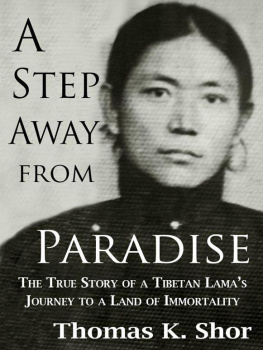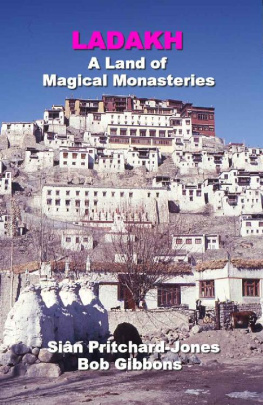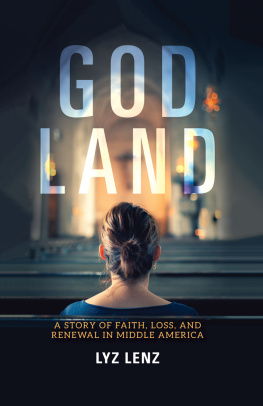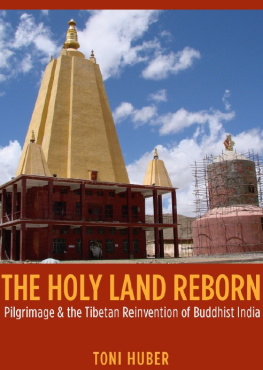A
STEP AWAY
FROM PARADISE:
The True Story of a Tibetan Lamas
Journey to a Land of Immortality

THOMAS K. SHOR

Mount Kanchanjunga as seen from Darjeeling
from the Himalayan Journals of the British
Naturalist Sir Joseph Dalton Hooker, 1891
Thomas K. Shor 2012 All Rights Reserved
www.ThomasShor.com
This book was first published by
Penguin Books India
in 2011
CLICK HERE TO ORDER PENGUIN EDITION

Thomas K. Shor is also the author of:
INTO THE HANDS OF THE UNKNOWN:
AN INDIAN SOJOURN WITH A HARVARD RENUNCIENT
Click HERE to order eBook from Amazon.com
See the END OF THE BOOK for more info and a sample
THE MONK AND THE SLY CHICKPEA:
TRAVELS ON CORFU
Click HERE to order eBook from Amazon.com
See the END OF THE BOOK for more info and a sample
This book is dedicated
to those who dared.

Dont listen to anybody. Decide by yourself and practice madness. Develop courage for the benefit of all sentient beings. Then you will automatically be free from the knot of attachment. Then you will continually have the confidence of fearlessness and you can then try to open the Great Door of the Hidden Place.
~from Tulshuk Lingpas Guidebook to the Hidden Land

Tulshuk Lingpa,
shortly before he set out
on his visionary expedition

Map 1. South Asia map,
showing the main areas
where the story takes place

Foreword
by
Tenzin Palmo
A Step Away from Paradise is a riveting tale of adventure, intrigue and devotion. It is an extraordinary account of Tulshuk Lingpa, a Tibetan lama who lived quite recently and received revelations concerning the Hidden Land to be found in a crack on the flanks of Mt Kanchenjunga in Sikkim, which according to Tibetan tradition is another dimension of existence beyond death, disease or suffering yet still on this very earth and accessible without the need of dying first.
I personallyas others who have read the manuscriptfound it an engrossing read. After years of careful research, Thomas Shor delivers an enthralling account of the life of Tulshuk Lingpa, who was a modern day lama in search of this veritable Shangri-la along with 300 devoted followers. The author has gone to great trouble to make his research both accurate and accessible. It really is both a fascinating read, a commentary on the recent political history in Tibet and the Himalayan regions, and an aspect of Tibetan Buddhism not usually talked about. Thomas Shor, who is the author of Windblown Clouds about his early travels in India, is not just an excellent writer. I have attended a public lecture and presentation based on A Step Away from Paradise that Shor gave, and it left the audience spellbound and amazed that such events could have happened so recently.
A Step Away from Paradise deals with an aspect of Tibetan Buddhism that is in some ways more honest to the real spirit of Tibet than all the usual books on Tibetan doctrine and will, I am sure, be of interest to a wide audience. It is a fascinating account of a little-known charismatic figure that will challenge even the most skeptical mind and provide a fresh perspective on what we normally regard as reality.
Like no other book I have ever read, A Step Away from Paradise is both unique and intriguing. Highly recommended.
~ Tenzin Palmo

Introduction
What would have happened
if Lewis Carroll had proclaimed the reality
of Wonderland?
What if he had gathered a following
and launched an expedition?
It was autumn 1962.
The Cuban Missile Crisis threatened to end the world as we knew it. As Kennedy and Khrushchev teetered on the brink, it became startlingly clear that not only was an apocalyptic end within our technological means, it was also an immediate likelihood. The fear of incoming Soviet nuclear-tipped missiles meant schoolchildren across America were learning to duck and take cover under their desks while their parents dug bomb shelters they believed would take them to the other side of the looming apocalypse.
During those same tense days in October 1962 and half a world away, a charismatic and visionary Tibetan lama was leading over 300 followers into the snow and glaciers of the high Himalayas in order to open the way to a hidden valley of immortality that Tibetan scriptures dating back to the twelfth century describe as a place of unimaginable peace and plenty that can be opened only at a time of the most dire need, when cataclysm racks the earth and there is nowhere else to run.
This book tells their true story.

CHAPTER ONE
A Crack in the World
There is a crack in everything. Thats how the light gets in. ~Leonard Cohen
Youre a writeryou like stories? My mother-in-law has a story from when she was young, a story of a journey she took into the glaciers of the high Himalayas. You might think its fictionthe imaginings of an old womanbut I assure you it is not. It will make you question your sense of reality.
It was with these words that my friend Tinley set this book in motion. Tinley is a master painter of thangkas the Tibetan religious scroll paintings depicting the tantric deities and various Buddhas in their myriad forms. He was crushing a blue semi-precious stone acquired from Tibet to match a patch of sky he was fixing on an antique thangka belonging to Sikkims royal family, which was stretched taut on a wooden frame. He was sitting cross-legged on a rug in his studio in Gangtok, the capital of the Indian state of Sikkim, a once-independent Himalayan kingdom. I was sitting opposite, leaning against the wall and watching him work.

Tinley Gyatso, in his studio in Gangtok, Sikkim
The son of Tibetan refugees, Tinley grew up at the Tibetan Refugee Self-Help Center in Darjeeling. He was around forty when I met him, and lived with his wife, son and mother-in-law on the top floor of a building called the Light of Sikkim in the center of Gangtok. He painted, had painting apprentices and, with his wife, ran a small cyber caf.
I had been introduced to his mother-in-law, a woman of seventy-five who was often leaning on the wide railing of their rooftop flat looking out over the city and the mountains beyond, spinning her prayer wheel and reciting mantras. Three years earlier she had shaved her head, donned a robe and become a nun in order to devote herself more fully to the religious life. Often when I visited, I would stand next to her and lean on the railing looking over the city and snow mountains beyond, stilled by her calm presence. I did not know much about her beyond that presence, since she spoke not a word of English and I speak neither Tibetan nor Bhutanese.
Next page

















